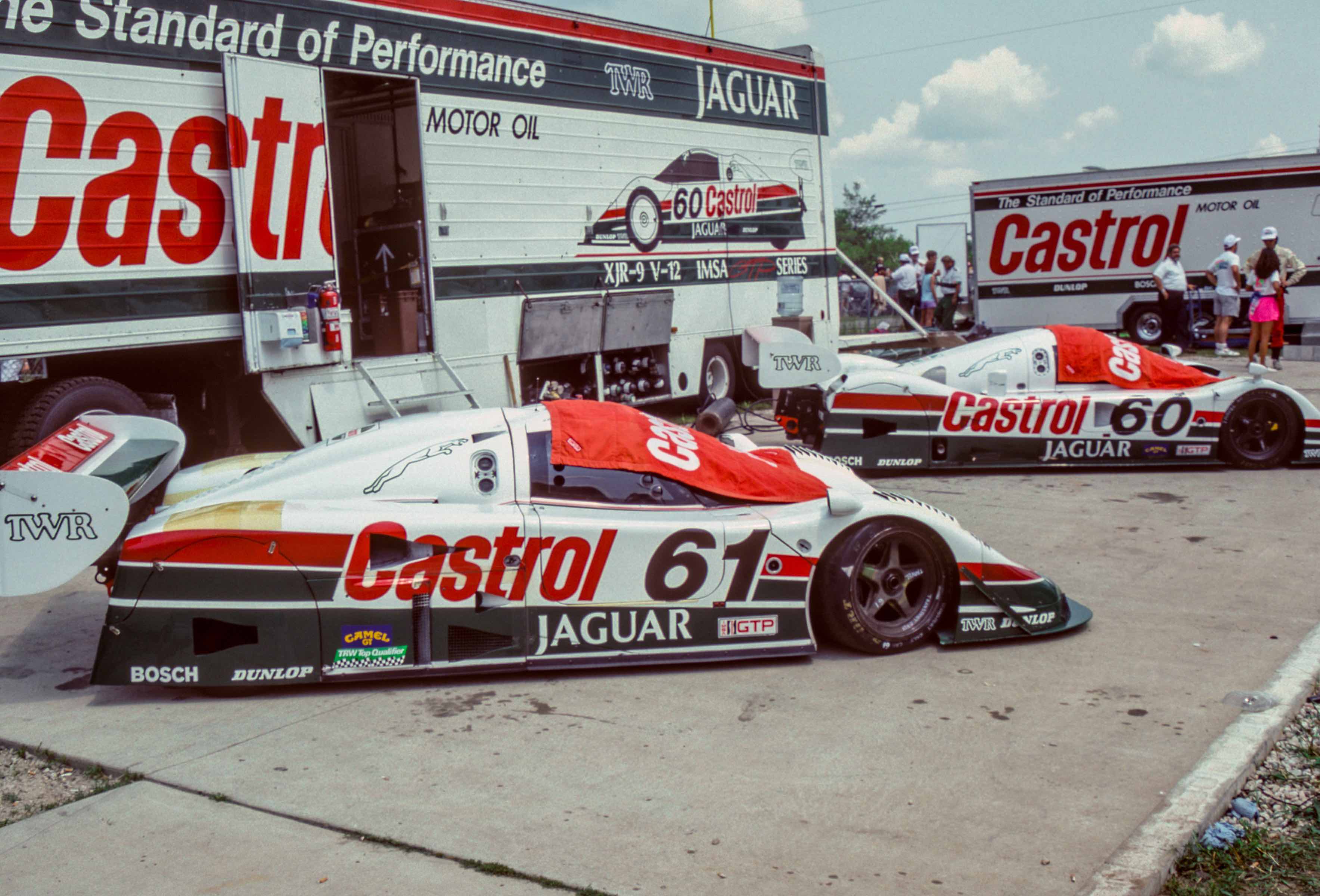The following is an excerpt from “IMSA 1969-1989” that tells the inside story of John Bishop’s life and how he created the world’s greatest sports car racing series. Available from Octane Press or wherever books are sold.
Former IMSA RS and GTU champion Don Devendorf (right) was the leader behind Electramotive Engineering, the team that fielded the all-conquering Nissan GTP ZX-T in the IMSA Camel GT Series in the last half of the 1980s. The team won the IMSA championship in 1988 and 1989. Photo: Peter Gloede
The TWR Racing Jaguar XJR-10 of Jan Lammers and Price Cobb led most of the way at Portland in 1989. Photo: Peter Gloede.
At the 1989 Portland round of the Camel GT Series, a titanic battle between the Nissans of Geoff Brabham and Chip Robinson and the two Castrol Walkinshaw Jaguars driven by Price Cobb/Jan Lammers and Davy Jones/John Nielsen lasted the entire distance. At the end of the race, an extraordinary sequence of events unfolded that created confusion and a tough decision for IMSA officials.
Jaguar ran two different cars in 1989—the XJR-9 (foreground) that featured a 7.0-liter, 12-cylinder, normally aspirated engine, and the new XJR-10 designed around a 3.0-liter, 6-cylinder twin-turbocharged motor. The cars are shown here at the previous round at Road America, sitting next to the Castrol transporter. Photo: Peter Gloede
Although the race was scheduled for 102 laps, for reasons never fully understood the local SCCA starter took it upon himself to throw the checkered flag on the 94th lap instead. About a third of the field took that flag, including the leaders – Cobb over Brabham by little more than one second. The teams knew the race was supposed to go 102 laps, so, for the most part, they told their drivers to keep right on racing. After a few cars took the checkered flag, IMSA race control realized what had happened, so they told the starter to pull in the checkered flag. The remaining cars flew by as if nothing had happened.
The Electramotive team was well known for their lightning-quick pit stops during their championship years, pictured here at Road America in 1989. Photo: Peter Gloede
Race control notified everyone on the radio that the race was proceeding to the full race distance. Five laps later, Brabham got by Cobb and took the second checkered flag after 102 laps. In the meantime, IMSA officials consulted the regulations and came to the decision that although the first checkered flag was flown early, it had to signify the end of the race: the event was over as of 94 laps and the win was awarded to Cobb/Lammers based on the standings at that time.
The now incensed Nissan team protested the results, which were held as provisional until the appeal could be heard by well-respected former driver John Gordon Bennett, IMSA’s commissioner. Bennett was the highest level of independent decision-making in IMSA’s appeal process. In other words, his decision would be final.
Realizing the intricacies of the situation, Bennett convened a panel of three other experts unaffiliated in any way with the parties in the dispute. The panel concluded that although incorrectly displayed, the sanctity of the checkered flag could not be disputed. IMSA was chastised by the panel for allowing the unfortunate flagging error to happen. The organization never again depended on local starters at races, instead bringing its own starter to every event. The Nissan team was disappointed, but the decision was accepted after one more minor protest.
At the next race in San Antonio, Nissan handed out a wonderfully designed lapel pin showing the number 83 car, a checkered flag, the words “Portland 1989” and a large screw going through the car, illustrating their feelings about what had happened in the Pacific Northwest.






An interesting race. But in the end the correct decision was made. The race was over when the flag waved the first time. I think from then on IMSA got it’s own starter who went to all the races?
Yes, indeed. From that point on, IMSA brought their own starter. That helped keep consistency with the drivers, teams and other race officials who all worked together at each event.
As a side note. That was the last Oregon region SCCA race that starter worked.
No sweeping the dirt under the carpet in this book! FYI — IMSA brought in Jim Sidley as its full-time starter after the unexpected checker at Portland. He had already been regularly working as the starter at Daytona, Miami, Sebring and West Palm.
The XJR-9 had a 6.0 Liter V12, this being an IMSA cap on engine capacity for normally aspirated engines.